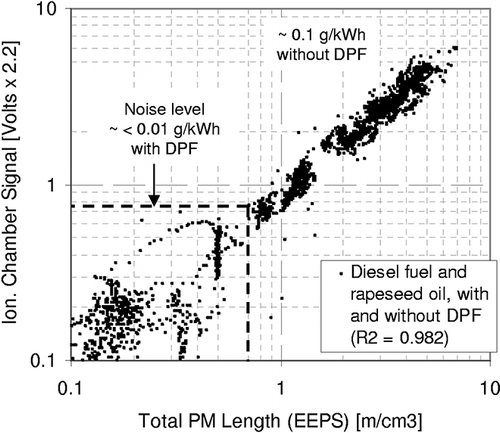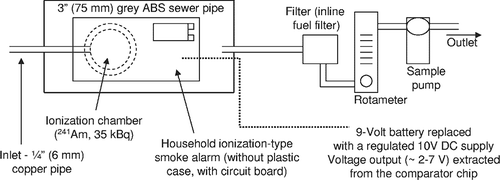Figures & data
Figure 3. Comparison of PM emissions measured by the ionization chamber (in arbitrary units) with gravimetric measurement at steady-state engine operation on diesel fuel at various speeds and loads.
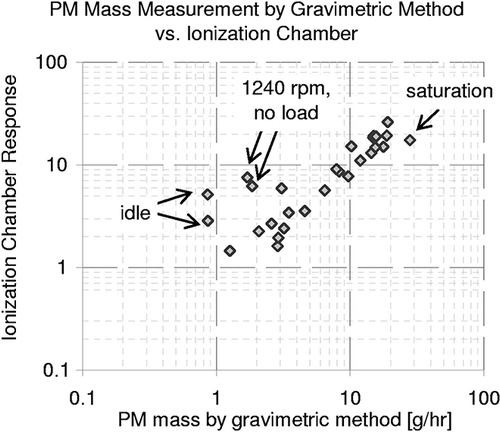
Figure 4. PM size distribution measured by SMPS and CPC during operation on diesel fuel at idle and at various loads.
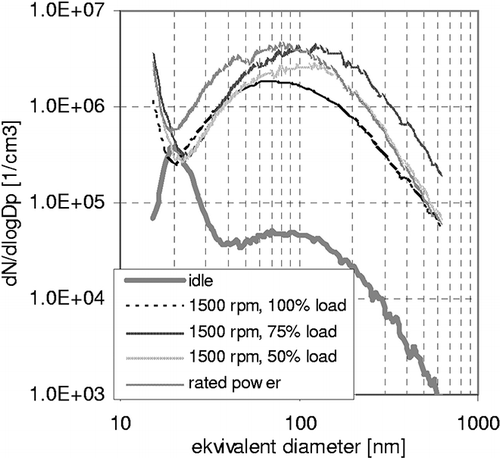
Figure 5. Comparison of total PM length measured by SMPS and CPC during steady-state engine operation on diesel fuel at various speeds and loads with the ionization chamber response.

Figure 6. Comparison of PM emissions measured by the ionization chamber (in arbitrary units) with gravimetric measurement at steady-state engine operation on diesel fuel and on heated fuel-grade rapeseed oil at various speeds and loads.
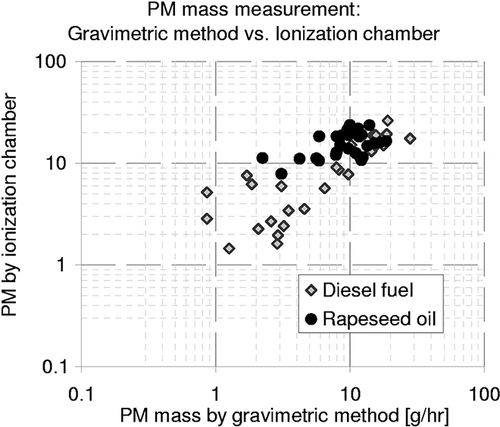
Figure 7. Comparison of total PM length measured by EEPS with the ionization chamber response during a sequence of steady-state operating points run on diesel fuel and heated fuel-grade rapeseed oil with and without a DPF.
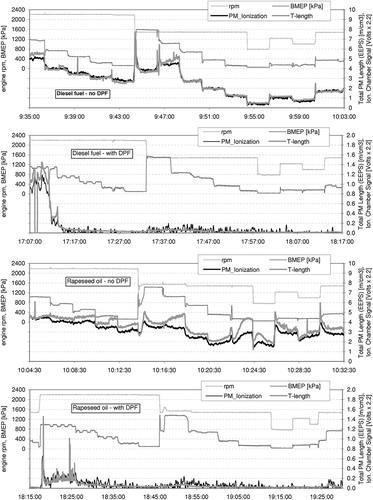
Figure 8. Comparison of PM emissions measured by the ionization chamber (in arbitrary units) with total PM length calculated from EEPS measurements during operation on diesel fuel without and with a DPF.

Table 1. Correlation of the second-by-second signal of the ionization chamber signal with EEPS measurements— operation without DPF
Figure 9. Comparison of PM emissions measured by the ionization chamber (in arbitrary units) with total PM length calculated from EEPS measurements during operation on heated rapeseed oil without and with a DPF.
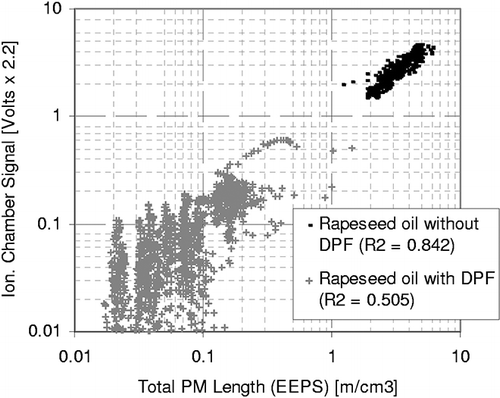
Figure 10. Comparison of PM emissions measured by the ionization chamber (in arbitrary units) with total PM length calculated from EEPS measurements—all tests.
